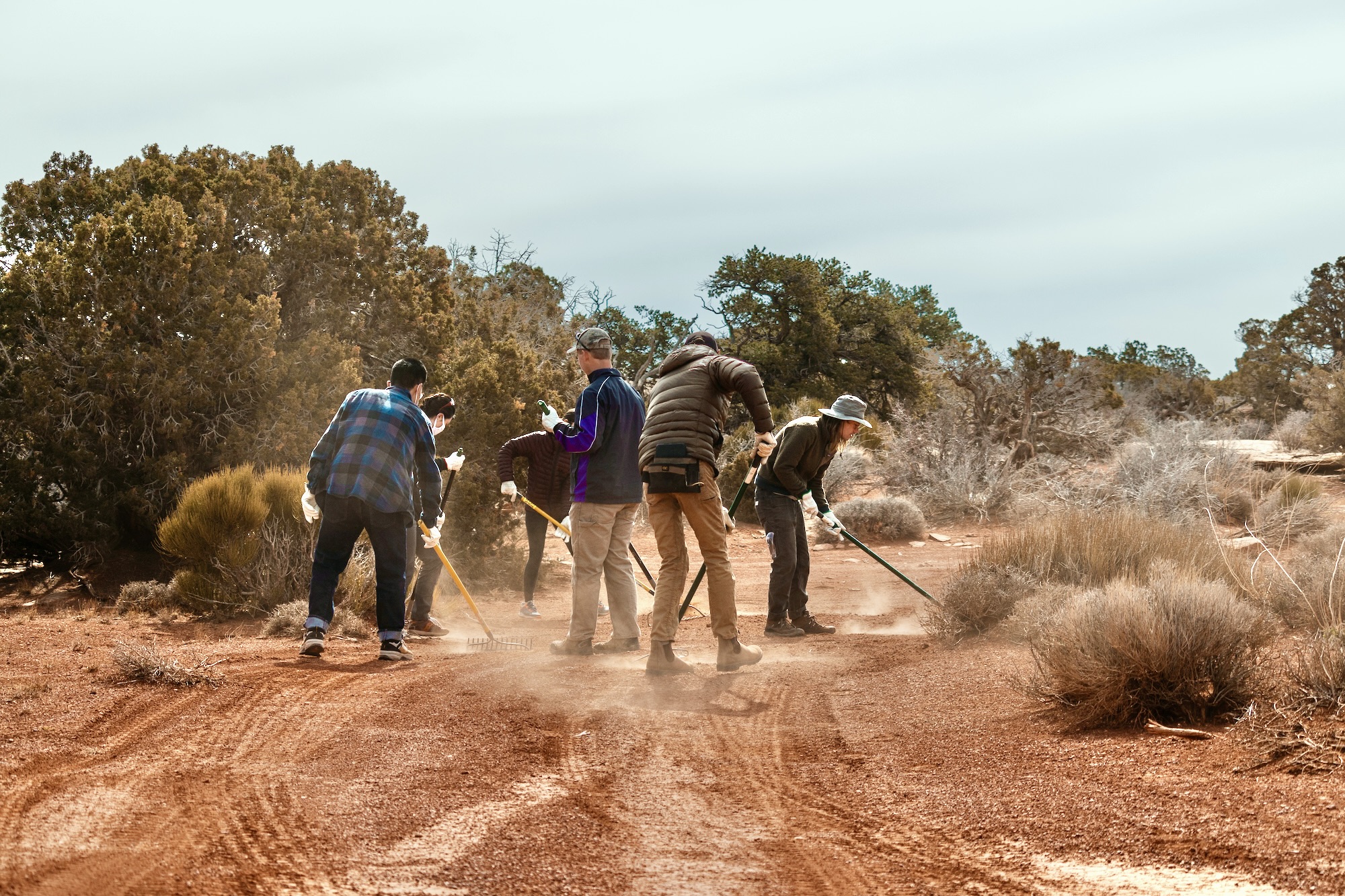Some information may be outdated.
Curious about the impact of recreation on local wilderness? The Southern Utah Wilderness Alliance will host its first “Canyon Country Stewardship Training” in the Mill Creek Canyon area on Friday, July 8. Participants will learn about public land monitoring by training to identify recreation impacts and collect data.
“The focus of the training is monitoring of public lands, especially where recreational use interacts with wilderness quality lands,” said Jeremy Lynch, stewardship director. The July training will focus on where the Steel Bender motorized route interacts with the Mill Creek Canyon wilderness study area. Trainings like these, Lynch said, allow SUWA to train locals who recreate outside to be able to collect valuable data about land impacts, so the nonprofit can stay on top of “where issues might be emerging.”
SUWA’s mission is to preserve wilderness in the Colorado Plateau, which they do through education initiatives, participating in public processes for land management decisions, and training volunteers for trail work. Lynch said the nonprofit works with over 300 volunteers during 25 wilderness study area remediation projects throughout the year—in June, volunteers helped remediate impacts of off-road vehicle travel in wilderness study areas in northern Utah, impacts of camping in study areas in the West Desert, and impacts of graffiti in the Canaan Mountain Wilderness.
All volunteering events are free and open to the public: anyone can volunteer at any time, Lynch said. There’s no minimum or maximum.

When SUWA’s stewardship program began in 2016, it only ran a few projects, Lynch said. At that time, most wilderness volunteer groups focused on trail infrastructure, instead of wilderness quality. SUWA filled that gap, Lynch said.
“Over the past seven years, it’s just grown and grown,” he said. “We’ve taken on more staff and we’re hoping to take on more. For the time being, it’s just one of those things that seems like the work will never end, and we just always need to be out there.”
That’s a big reason why SUWA is focused on training new volunteers.
There are a number of threats to wilderness quality, especially recently, Lynch said. SUWA has been closely watching the impacts of technology in the outdoors, like e-bikes and drones. Lynch sees SUWA and its volunteers as the temporary caretakers of wilderness areas—SUWA will maintain the land until it’s officially designated Wilderness, he said.
“We’re working to manage those lands while the recreation industry grows and grows and grows,” he said. “That’s the thing we’re seeking to keep pace with. We want to help people better understand—through informational campaigns, social media, or through the stewardship program and direct experience on the ground—what each of us can be doing to lessen our impact.”
The training is one day only, offered on July 8 starting at 8 a.m. A “classroom session” at the Bureau of Land Management’s Canyon Country field office in Moab will kick off the day, followed by a training hike in the Mill Creek Canyon Wilderness Study Area until 1 p.m.
The training is open to Grand and San Juan County residents, who will be expected to commit to an annual monitoring hike quota: volunteers are expected to pick two wilderness study areas to monitor 3-4 times per year.
“And part of what this training is about is introducing people to the impacts you might not even be aware of,” Lynch said.
A full list of projects, and an application to participate in the training or any other volunteer projects, is available at www.suwa.org/projectcalendar. Anyone interested in signing up for the training can also email Lynch at volunteer@suwa.org—Lynch said if anyone is interested in training, but can’t make the dates, he can work with people individually.
Appreciate the coverage? Help keep local news alive.
Chip in to support the Moab Sun News.





